Curious about Alder wood and where it stands in the hardwood or softwood spectrum? Let’s explore this unique wood’s properties and uses that might just surprise you!
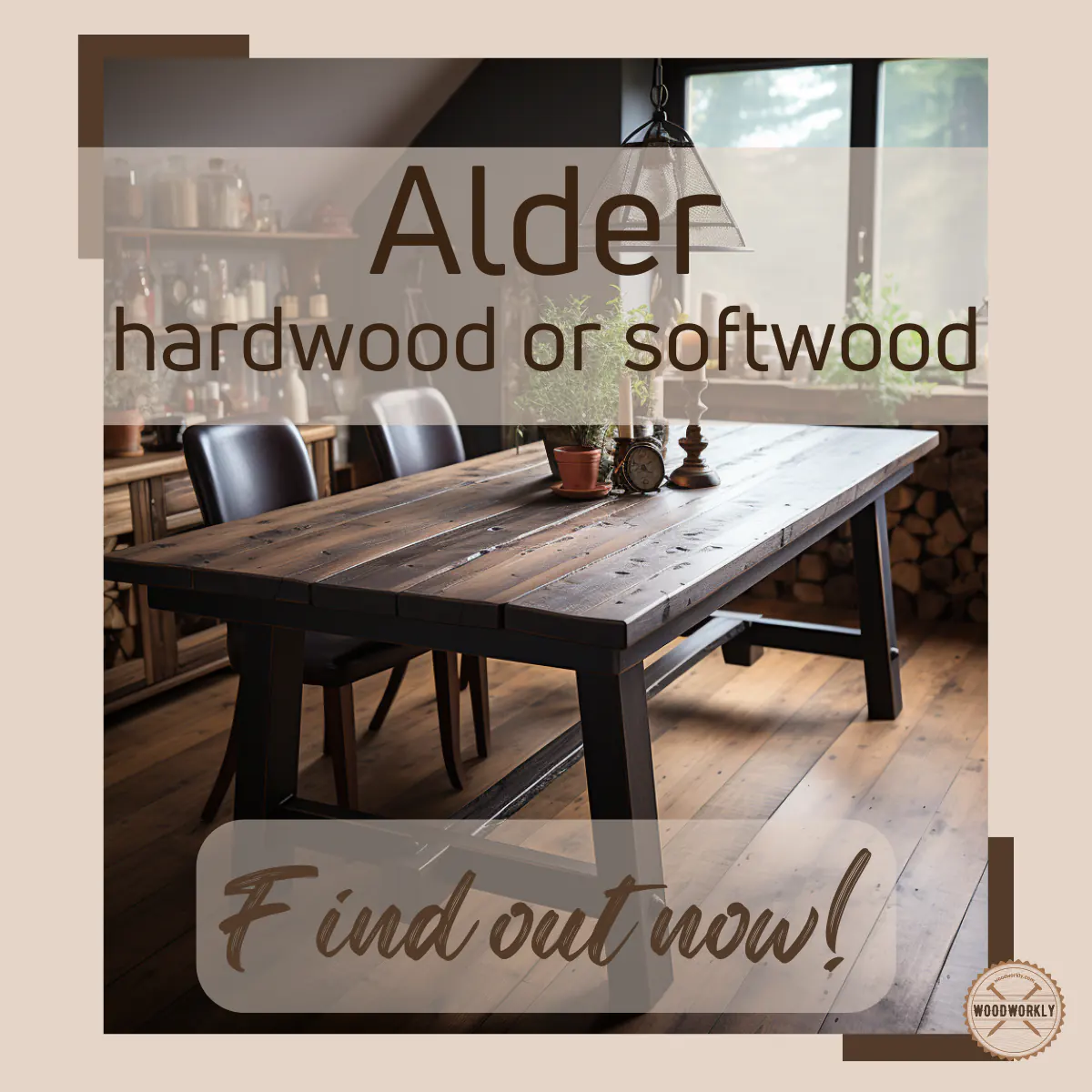
Alder is a popular wood for making furniture, doors, window frames, and cabinetry.
It is considered one of the most popular wood types in the Pacific Northwest and can use for various woodworking projects.
While working with Alder, I noticed it is significantly soft than most other woods. Therefore, I was curious about its hardness.
So, I researched with my fellow woodworkers to find its hardness and the best applications of Alder wood.
Now with years of experience after working with different Alder wood projects, here’s what I know about, Is Alder a hardwood?
Yes, Alder is considered a hardwood, originating from deciduous trees. However, it’s one of the softer hardwoods with a Janka hardness score of 590, making it softer than many other hardwoods like oak or birch but harder than certain softwoods such as white pine or aspen.
But that’s just a quick snapshot.

So, in this article, I’ll explore whether is Alder a hardwood and how hard is Alder by taking its characteristic qualities. I’ll discuss the pros and cons of Alder wood and its uses of it.
Furthermore, I’ll answer some frequently asked questions as well.
So, let’s jump in!

First of all, let’s have a quick look at what is Alder wood.
What Is Alder Wood?
Alder wood is a type of hardwood most abundant in North America, especially in the Pacific Northwest.
This wood has been used in a variety of applications due to its numerous advantageous characteristics, making it popular among woodworkers and manufacturers alike.
Despite being a hardwood, alder is notably softer than many of its hardwood counterparts, but don’t let this fool you into thinking it’s any less worthy of attention.
Origins and Appearance of Alder Wood
Alder is closely related to birch and often stands as a more cost-effective alternative.
In its fresh-cut state, alder is almost all white, but it beautifully transforms into a light brown hue with aspects of yellow or reddish tones when exposed to air.
The grain pattern is subtle, fairly straight, and uniform in texture, making Alder visually appealing in its simplicity.
Working with Alder Wood: A Woodworker’s Experience
The versatility of alder wood is well-recognized among woodworking enthusiasts.
Its straight grain contributes to excellent shape retention, resisting warping or twisting effectively.
Additionally, this wood can be smoothly machined, turned on a lathe, nailed, screwed, and glued with ease.
It takes stain well, pairing especially well with walnut or cherry, and can be painted to a good finish.
This makes alder a top choice for a variety of home fixtures like baseboards, crown molding, door trims, and more.
Alder in Furniture and Cabinetry
Despite its relative softness, alder’s straight grain and stability make it an excellent choice for furniture and cabinetry work.
It’s commonly used for cabinet faces and doors, shutters, kitchen utensils, and even bedroom furniture like nightstands.
It’s worth mentioning that alder takes stains exceptionally well, so a well-stained alder piece can perfectly match other hardwoods in your furniture collection.
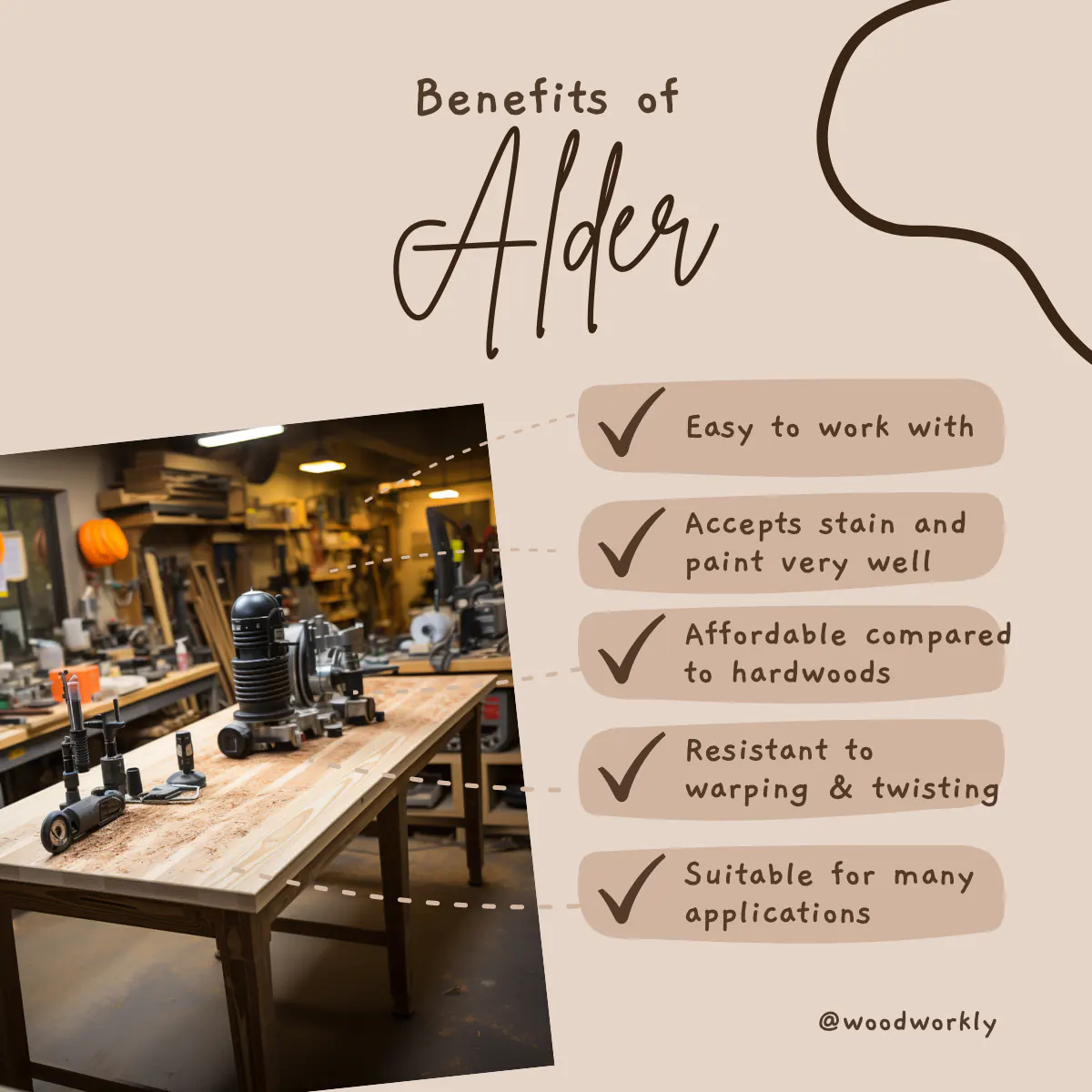
How Hard Is Alder Wood?
Alder wood is softer than most hardwoods and some softwoods as well. But Alder wood is considered a hardwood.
Because of having less hardness than many other hardwoods, Alder wood is known as soft hardwood.
Janka hardness test is the standard method of finding the hardness of a particular wood by considering its resistance against wear and dent.
If a particular wood has high resistance against wear and tear, its Janka hardness test value is high.
So, according to the Janka hardness test values, Alder wood has a hardness rating of 590 lbf (2,624 N), which is significantly lower than most hardwoods.
Now you’re thinking, why do I consider Alder wood as hardwood if it is that soft with a poor hardness rating than other hardwoods in the family.
The reason is that hardwoods come from deciduous, flowering, nut-producing trees, whereas softwoods come from conifer trees.
So, Alder wood comes from a deciduous tree with all the unique properties of the hardwood family.
Even though Alder has less hardness value than other hardwoods, structure-wise, it 100% belongs to the hardwood family.
According to the Janka hardness test, Alder has a hardness rating of 590 lbf (2,624 N).

Alder Wood Hardness Comparision
Here’re the hardness ratings of other popular wood types to get an idea about how hard Alder wood is.
| Wood species | Hardness value |
| Brazilian Walnut | 3,684 lbf (16,390 N) |
| Red Mahogany, Turpentine | 2,697 lbf (12,000 N) |
| Brazilian Cherry, Jatoba | 2,350 lbf (10,500 N) |
| Golden Teak | 2,330 lbf (10,400 N) |
| Hickory, Pecan, Satinwood | 1,820 lbf (8,100 N) |
| Hard Maple, Sugar Maple | 1,450 lbf (6,400 N) |
| White Oak | 1,360 lbf (6,000 N) |
| Ash (White) | 1,320 lbf (5,900 N) |
| American Beech | 1,300 lbf (5,800 N) |
| Red Oak (Northern) | 1,290 lbf (5,700 N) |
| Yellow Birch / Baltic Birch | 1,260 lbf (5,600 N) |
| Teak | 1,155 lbf (5,140 N) |
| Black Walnut, North American Walnut | 1,010 lbf (4,500 N) |
| Cherry | 995 lbf (4,430 N) |
| Black Cherry, Imbuia | 950 lbf (4,200 N) |
| Red Maple | 950 lbf (4,200 N) |
| Douglas Fir | 710 lbf (3,158 N) |
| Silver Maple | 700 lbf (3,100 N) |
| Alder | 590 lbf (2,624 N) |
| Hemlock | 540 lbf (2,402 N) |
| Black Spruce | 520 lbf (2,313 N) |
| Sitka Spruce | 510 lbf (2,268 N) |
| Cypress | 510 lbf (2,268 N) |
| White Spruce | 480 lbf (2,135 N) |
| Redwood | 420 lbf (1,868 N) |
| Engelmann Spruce | 390 lbf (1,735 N) |
| Sugar Pine | 380 lbf (1,690 N) |
As you can see, the hardness rating of Alder wood is so poor than many other kinds of wood.
Some softwoods have higher hardness values than Alder wood, such as Cedar, and Douglas fir.
But as a soft hardwood, it’s strong, hard, and dense which can be applied especially for small woodworking projects.
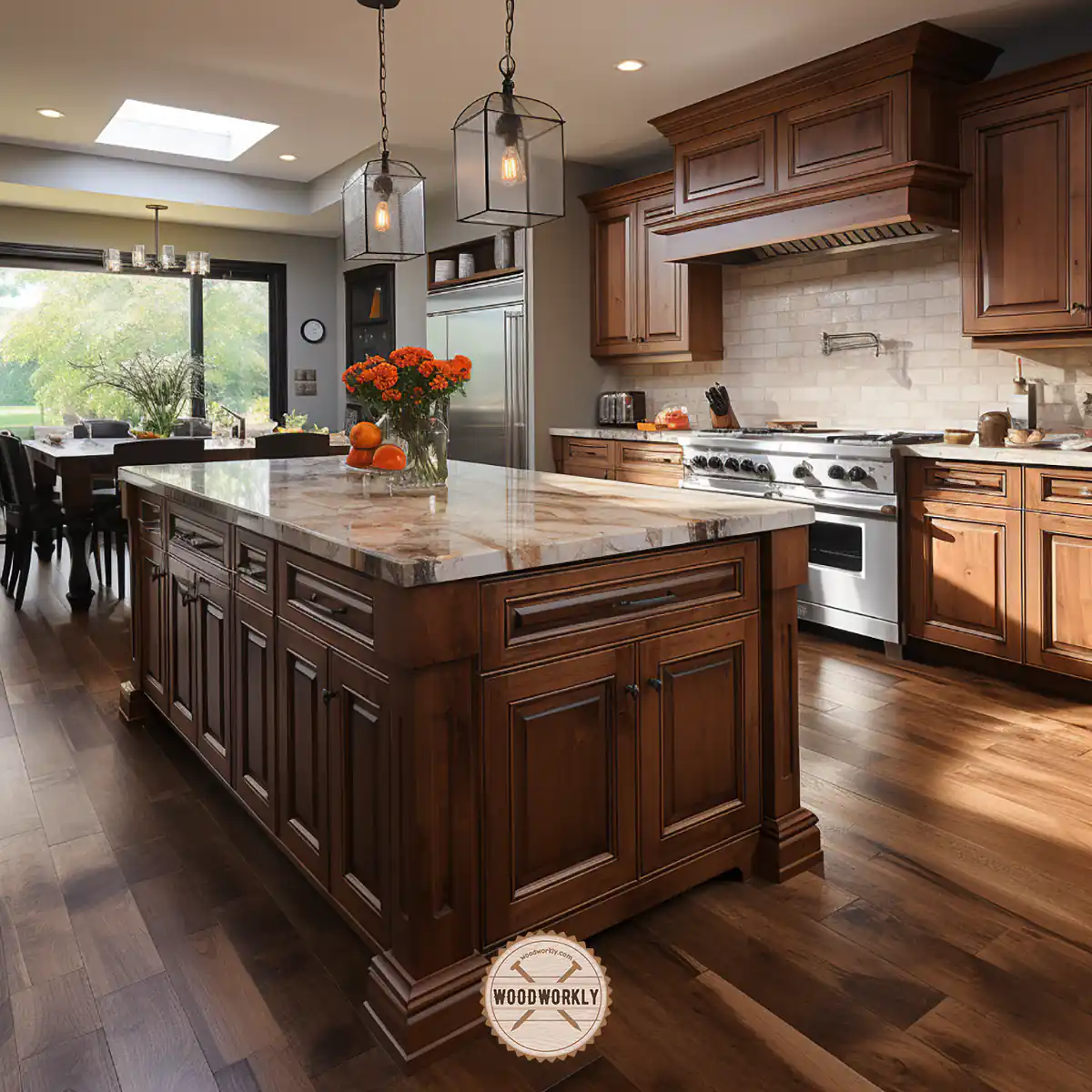
Alder Wood Characteristics
Alder wood is a hardwood with a light to medium brown color and close-grained texture.
It has diffused porous structure with brownish or whitish lines that separate growth rings. Small pores are evenly distributed and the same in size.
It has wide rays that are 1 inch long on a tangential surface.
Vessels are small to medium in size with narrow rays. Rays are spaced closely, and aggregate rays are spaced wide.
Alder wood has a straight grain with a moderately fine uniform texture that adds a unique appearance to the wood.
It has good decay resistance compared to most softwoods.
Most importantly, although Alder is considered a hardwood, it has good workability. Working with Alder wood is so much easy even for a beginner in woodworking.
It curves so easily compared to other hardwoods. Therefore, Alder is popular in guitar and making other musical instruments.
But because of being too soft, Alder has poor resistance to denting.
Same as poplar, Alder wood is a closed-grained wood. This makes it easy to finish in woodworking. It has moderate weight and hardness.
Overall, Alder wood is considered a versatile wood type.
Here’re the most significant qualities of Alder wood,
- Hardwood
- High workability
- No chemical odor
- Poor hardness
- Medium-density
- Soft
- Aesthetically pleasing
Here’re the main characteristic features of Alder wood,
| Color | Medium to brown color |
| Density | 0.41 kg/m3 |
| Hardness | 590 lbf (2,624 N) |
| Stiffness | 1.38 Mpsi |
| Wood Type | Soft Hardwood |
| Applications | Furniture, Decking, Guitars |
So, let’s find out the advantages and disadvantages of Alder wood in terms of its hardness.
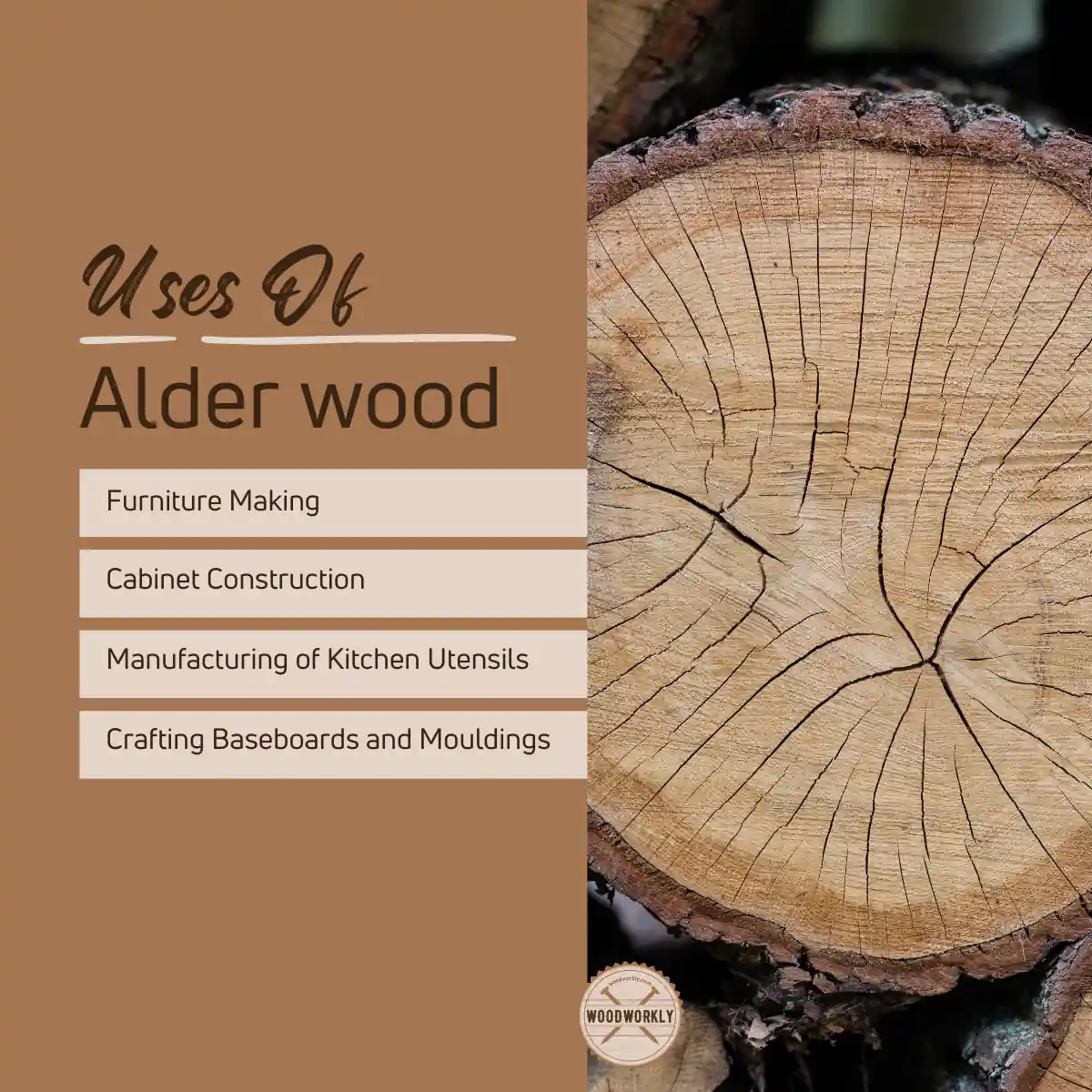
Pros and Cons of Alder Wood
| Pros | Cons |
| High workability | Softness |
| High availability | Poor durability |
| Affordable | |
| Versatility | |
| No chemical odor |
As you can see Alder wood is filled with lots of advantages. Most of the disadvantages can easily skip with proper maintenance.
Overall, Alder is a versatile hardwood.
Let’s talk use of Alder wood as a soft hardwood species.
What Is Alder Used For?
Here’re the uses of Alder wood,
- Furniture making
- Woodturning
- Flooring
- Small woodworking projects
- Musical instruments
- Doors
- Paneling
- Window frames
- Carvings
- Decorative purposes
- Millwork
As you can see, Alder wood can be used for any woodworking project.
But because of being too soft, I do not recommend Alder wood for big woodworking projects or constructions.
Make sure not to use Alder wood for the areas that face force directly.
It is too soft and not durable. But it is a hardwood with versatile properties.
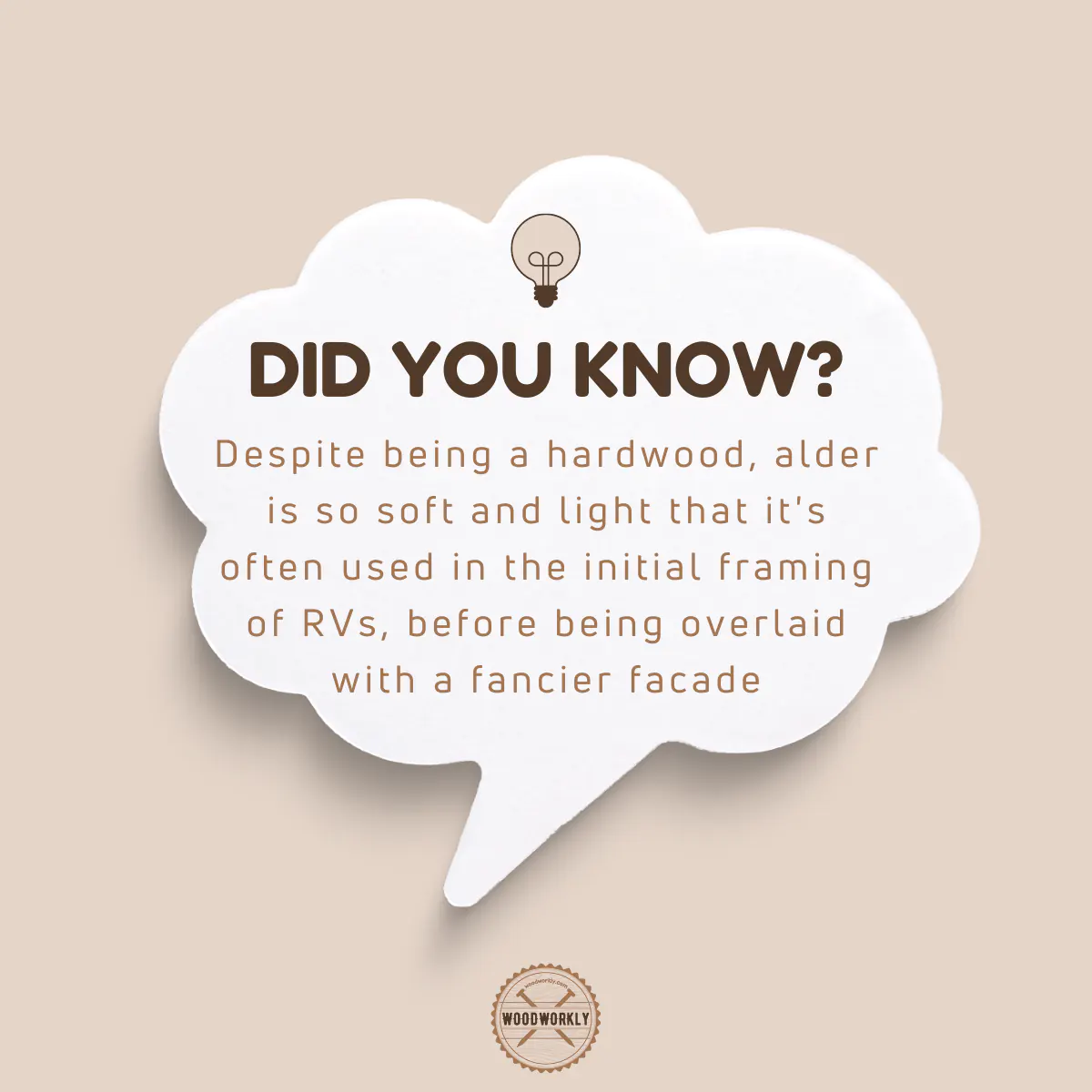
How Strong Is Alder?
Alder wood is a strong hardwood compared to most softwoods.
But it has poor bending strength compared to other hardwoods due to the medium density.
Here are Alder wood’s strengths in terms of compressive strength and bending strength.
- The compressive strength of Alder wood is 5,820 psi
- The bending strength of Alder wood is 9,800 psi
As you can see it has medium compressive strength and bending strength. Therefore,
Alder wood is not good for construction projects and better used for small projects that don’t need huge strength to work against the load.
Is Alder Good for Furniture?
Yes, Alder wood is an excellent choice for furniture since it is easy to work with and able to make durable furniture.
Let’s explore why Alder wood is a good choice for furniture.
Versatility in Design
One of the standout qualities of alder is its versatility.
This wood has a subtle and straight grain pattern, giving it a clean, refined look that blends effortlessly with various decor styles, whether modern, rustic, or traditional.
The fact that it can be stained well also means that it can mimic the appearance of other more expensive woods like cherry or walnut, providing you with high-end looks at a fraction of the cost.
Easy to Work With
Working with alder is often a pleasure for craftsmen.
Its receptive nature towards machining, nailing, screwing, and gluing makes it a convenient choice for intricate furniture designs.
Alder is easy to sand smooth and, once finished, can provide an appealing visual match to other hardwoods.
This makes it popular for pieces like dressers, cabinets, chairs, and tables.
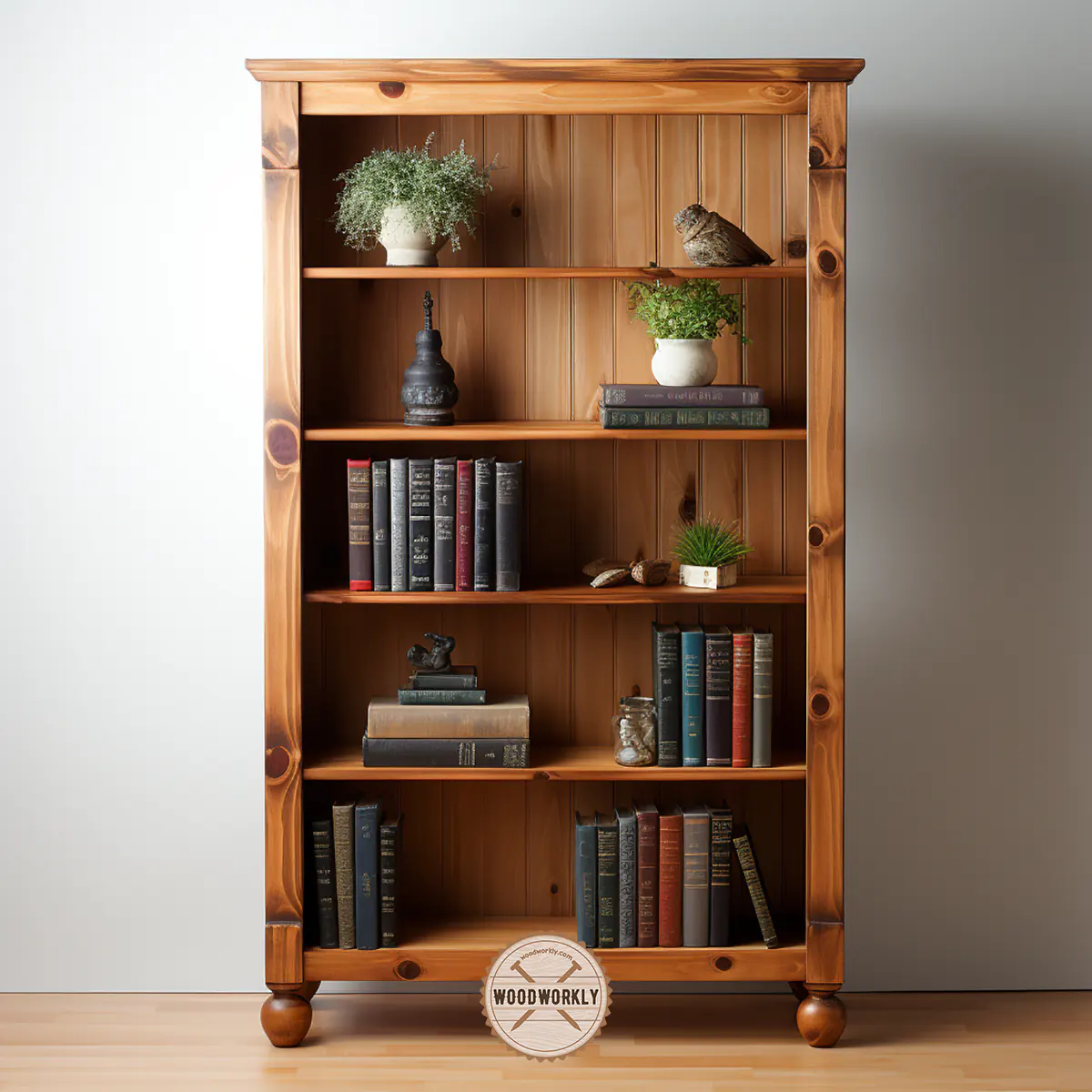
Durability and Maintenance
Due to its relatively soft nature, Alder furniture may require a bit more care than pieces made from harder hardwoods.
However, with proper maintenance, furniture made from alder can last for generations.
Its capacity to resist warping and twisting adds to its durability, ensuring that the furniture maintains its shape over time.
Moreover, alder’s softness can be turned into an advantage for those who love a vintage look.
Alder furniture can be distressed relatively easily, providing an authentic aged appearance that adds character to your spaces.
This, coupled with its excellent staining ability, opens up a whole world of possibilities for creating custom, unique pieces.
Economical Yet Elegant
The cost-effectiveness of alder is another reason why it’s such a popular choice for furniture.
Despite being classified as a hardwood, alder is less expensive than other hardwoods like oak or walnut.
However, it doesn’t compromise on the quality or aesthetics, making it a wonderful choice for those who want the charm of hardwood furniture without the hefty price tag.
As you can see, alder is more than just a good choice for furniture; it’s an excellent one.
Its workability, aesthetics, durability, and cost-effectiveness make it a go-to choice for many woodworking enthusiasts and professionals.
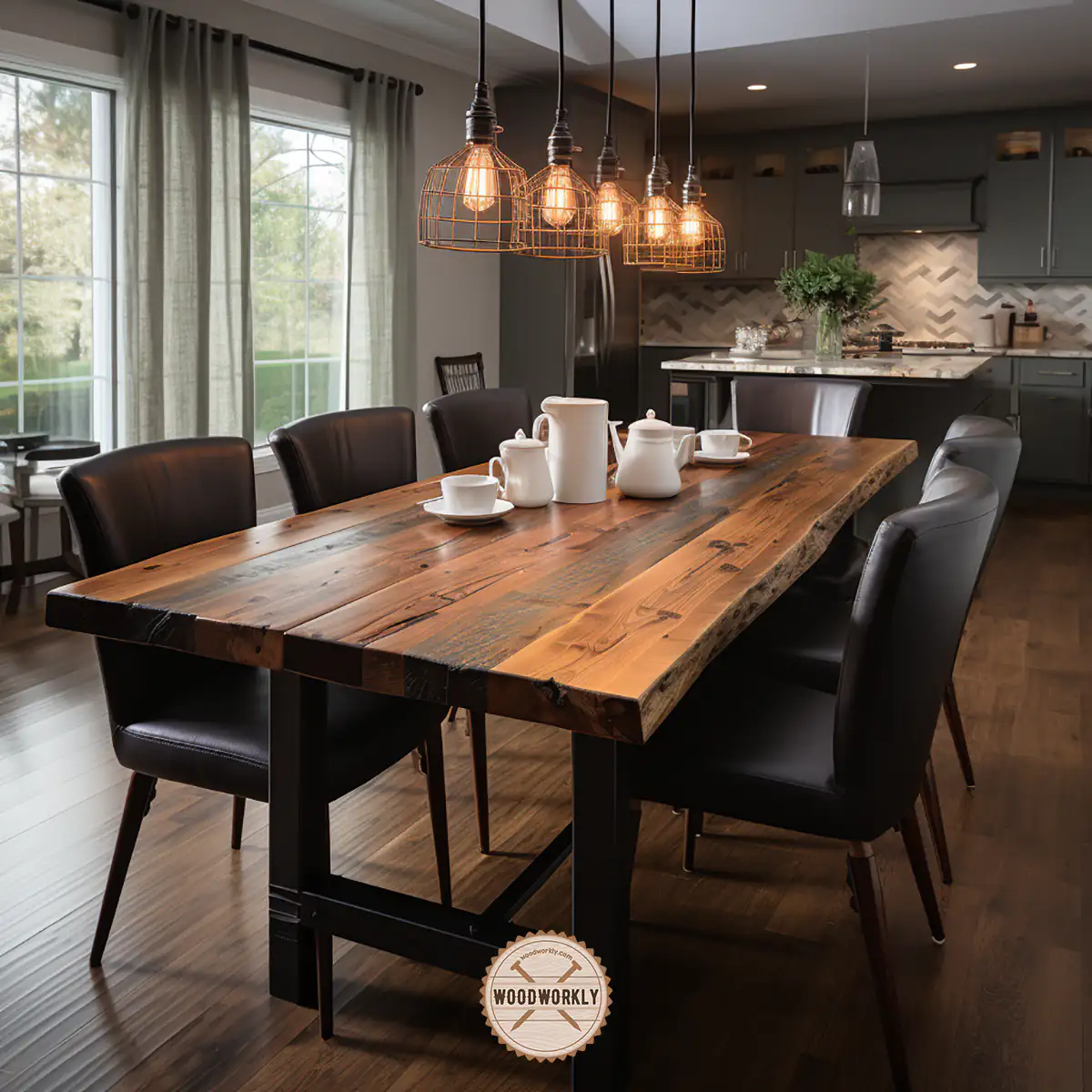
Is Alder Good for Flooring?
Alder is a good choice for flooring, especially if you’re going for a specific aesthetic, working within a budget, and installing it in areas with lower foot traffic.
However, its relative softness compared to other hardwoods might make it less suitable for high-traffic areas
So, let’s delve deeper into the world of alder wood flooring.
The Visual Appeal
With its light brown color and subtle grain patterns, Alder wood can lend a cozy and warm touch to your spaces.
Its ability to take well to staining allows you to achieve various looks, seamlessly matching your home’s decor style.
This aesthetic flexibility of alder can be a significant advantage for flooring, letting you change your interior design style without needing to replace the floor.
Durability Considerations
Being a relatively soft hardwood, Alder may not be the top choice for high-traffic areas in your home.
The Janka hardness scale rates alder at a modest 590, which indicates its softer nature.
High heels, pet claws, or heavy furniture might cause dents or scratches over time.
So, while it can serve well in low-traffic zones, other harder woods like oak or maple might be a better choice for areas that see a lot of footfall.
Maintenance and Care
On the maintenance front, alder wood flooring does not demand anything exceptional.
Regular sweeping or vacuuming and occasional damp mopping should keep it in good shape.
However, it’s worth noting that due to its softer nature, alder may show signs of wear more quickly than harder wood species, requiring refinishing more frequently.
Budget-friendly Option
If cost-effectiveness is a high priority, alder presents an attractive option.
While it still provides the visual appeal of hardwood, its price point is more approachable than other hardwood species.
This makes alder an excellent choice for homeowners who want the look and feel of hardwood flooring without a large budget.
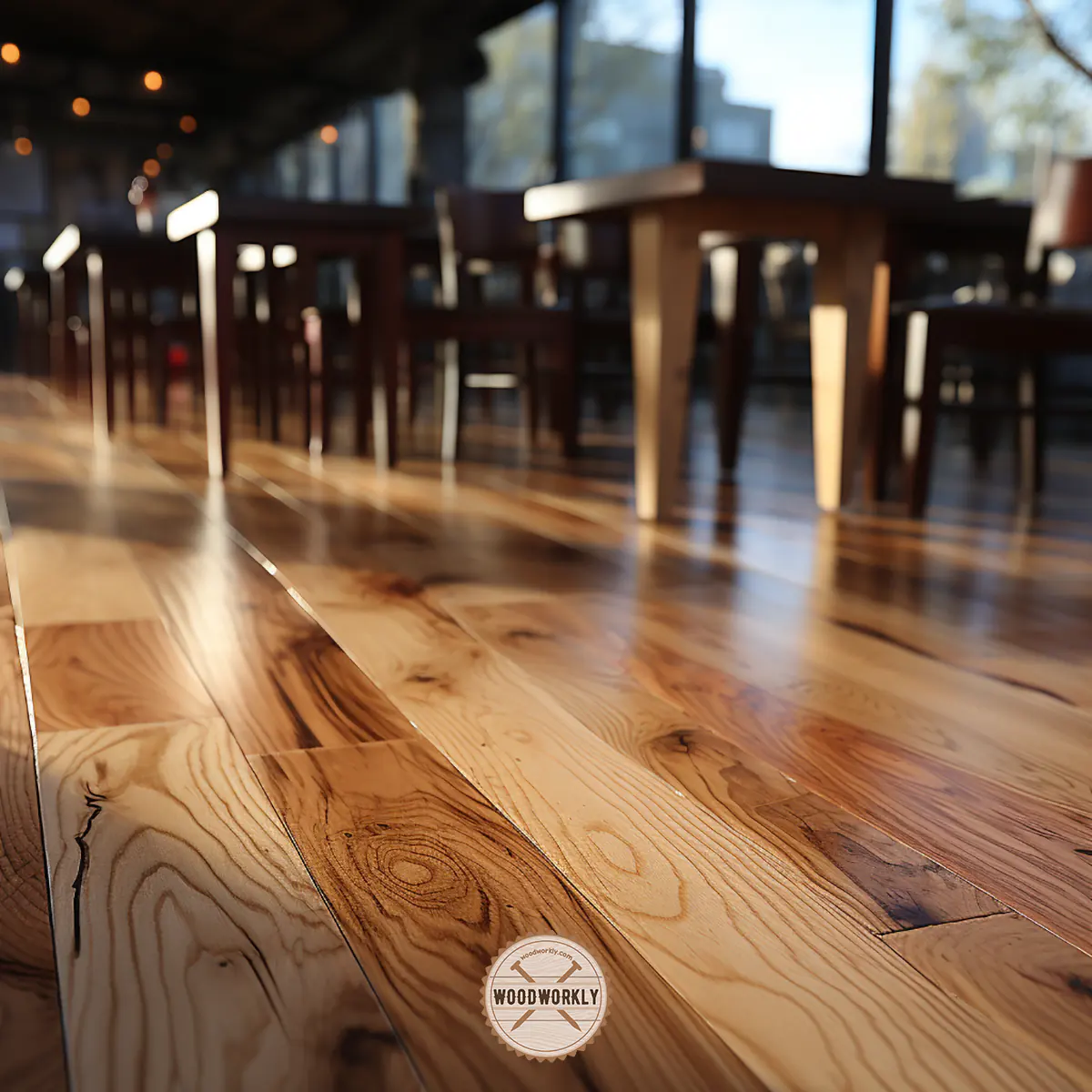
Let’s compare the hardness of alder wood with some other popular woods.
Which Is Harder Oak or Alder?
Oak is harder than Alder. Both Alder and oak are hardwoods. But red and white oak are harder, denser, and stronger than Alder wood.
According to the Janka hardness ratings, the hardness of oak wood and Alder wood is as follows,
| Wood Type | Hardness |
| Alder Wood | 590 lbf |
| Red Oak | 1,290 lbf |
| White Oak | 1,360 lbf |
As you can see oak wood is significantly harder than Alder even though both wood species belong to the same hardwood family.
Alder wood is one of the softest hardwoods on the planet.
Is Alder Harder Than Pine?
Alder is harder than Sugar Pine and White Pine. But Yellow Pine is harder than Alder. Even though all wood species of Pinewood belong to the softwood family, in terms of hardness they are almost the same.
Surprisingly softwood yellow Pine is so much harder than the hardwood Alder wood.
According to the Janka hardness test, the hardness comparison between Alder and Pinewood is here.
| Wood Type | Hardness |
| Alder Wood | 590 lbf |
| White Pine | 380 lbf |
| Sugar Pine | 380 lbf |
| Yellow Pine | 870 lbf |
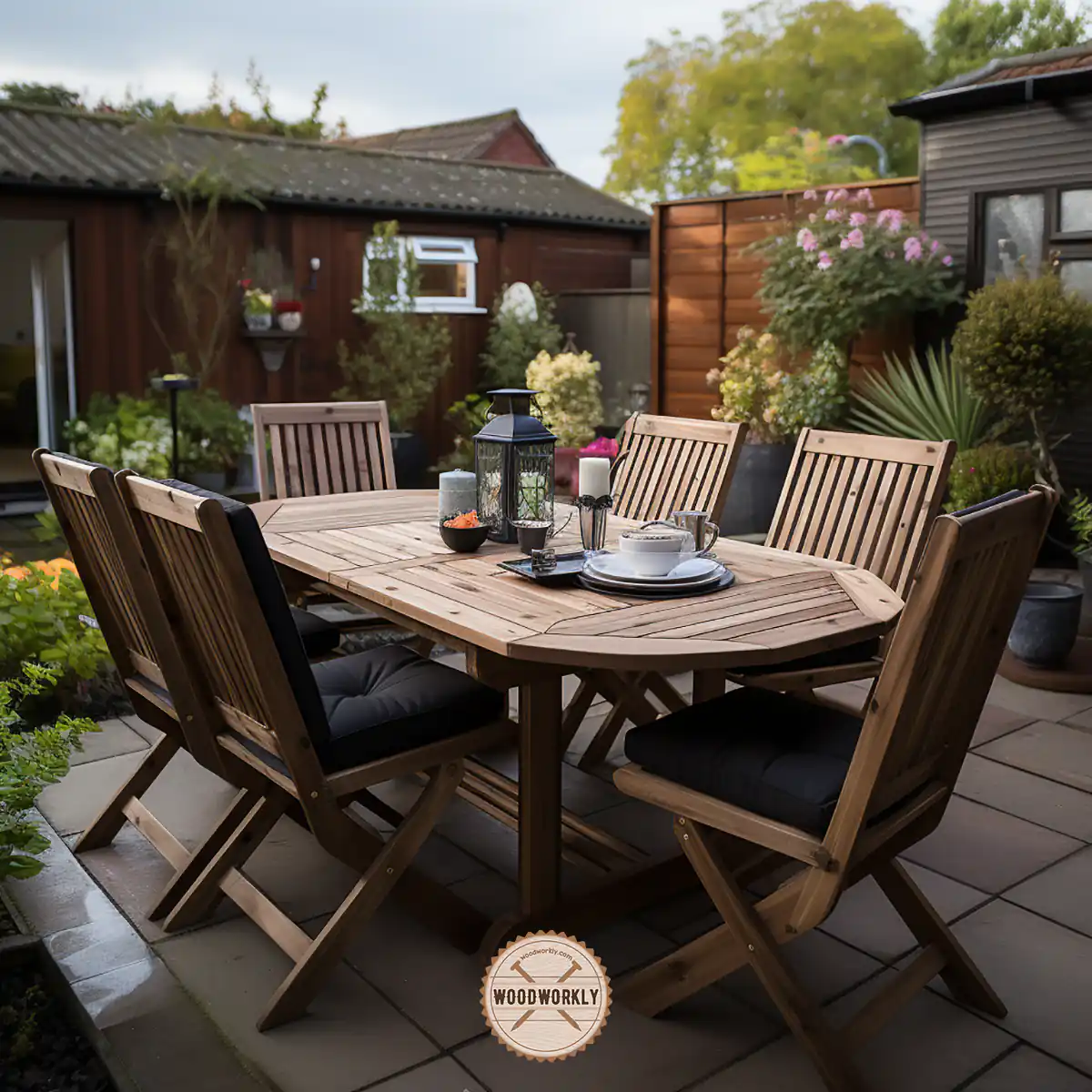
Is Alder Harder Than Maple?
Alder is softer than Maple. Both hard Maple and soft Maple wood species are so much harder than Alder wood.
They are almost twice as much harder than Alder wood.
According to the Janka hardness test, the hardness of Alder wood and Maple is as follows,
| Wood Type | Hardness |
| Alder Wood | 590 lbf |
| Hard Maple | 1,450 lbf |
| Soft Maple | 950 lbf |
Is Alder Harder Than Birch?
Birch is so much harder than Alder wood. Alder wood is twice as much softer as Birchwood.
According to the Janka hardness test, the hardness of Alder wood and Birch is as follows,
| Wood Type | Hardness |
| Alder Wood | 590 lbf |
| Birch | 1,260 lbf |
That’s it, folks! Now you know everything you need to know about whether is alder a hardwood with its characteristic qualities.
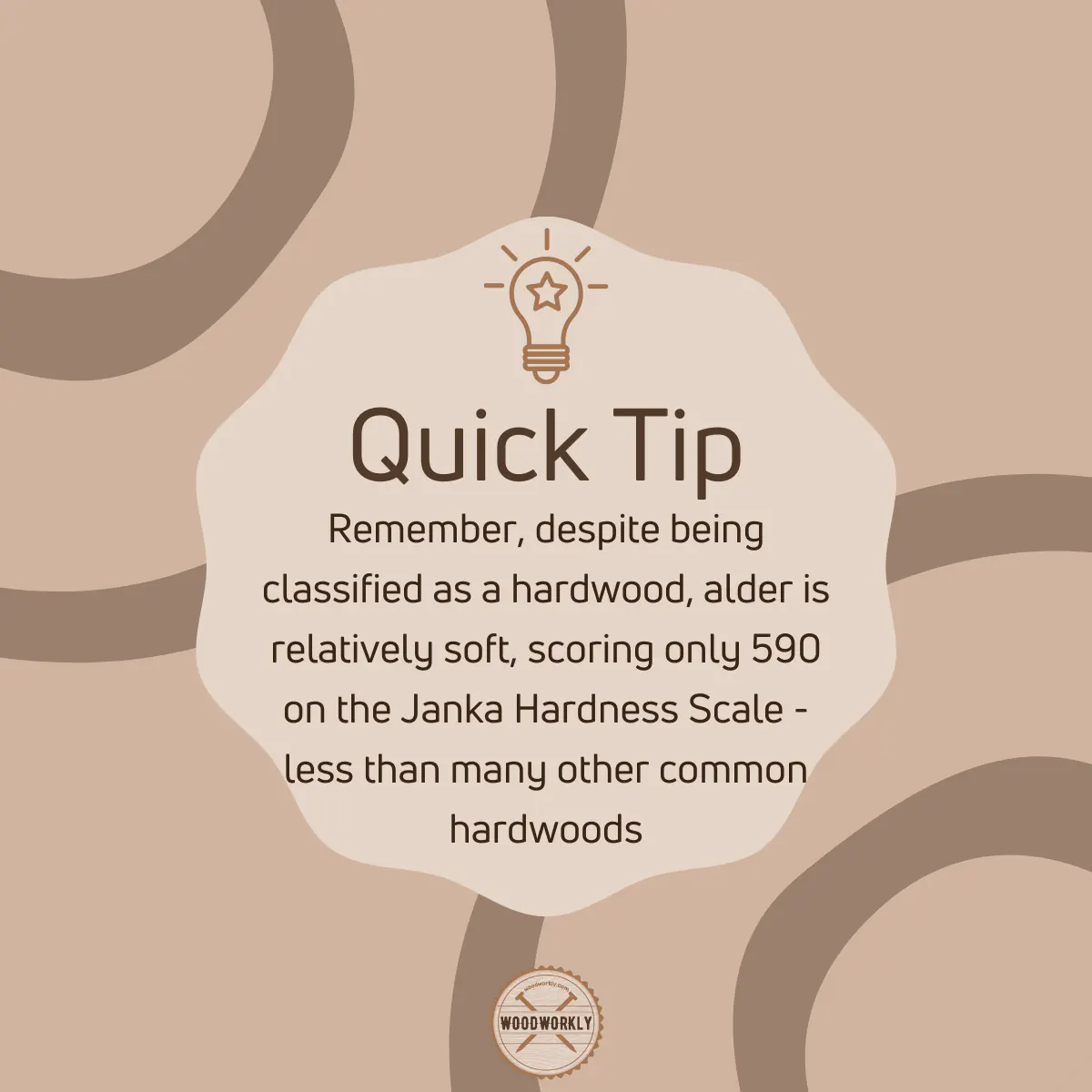
Let’s answer some frequently asked questions.
Is Alder a hardwood or softwood?
Alder is classified as a hardwood because it comes from a deciduous tree species, a type that sheds its leaves annually. However, it’s important to note that it’s one of the softer hardwoods, making it easier to work with but slightly less durable.
How hard is Alder compared to other woods?
Alder’s hardness is ranked at 590 on the Janka scale, making it harder than aspen and white pine, but softer than many other hardwoods such as birch, oak, and walnut.
What does Alder wood look like?
Alder wood has a light brown color, often with aspects of yellow or reddish hues. Its grain pattern is fairly straight and subtle, with little differentiation between its sapwood and heartwood.
Is Alder wood expensive?
Alder is often a more budget-friendly choice compared to other hardwoods, such as birch, making it a popular choice for many woodwork projects, particularly cabinetry.
How does Alder wood respond to staining?
Alder wood takes well to staining. It can pair well with other hardwoods like walnut or cherry when stained. However, care should be taken during application as its open pores can absorb the stain deeply.
Can Alder wood be used for outdoor projects?
While alder can be used for outdoor projects, it’s not as resistant to weathering and rot as some other hardwoods or specially treated woods. For outdoor use, it would require additional protection and regular maintenance.
Is Alder wood good for burning in stoves or fireplaces?
Yes, alder is considered good firewood as it splits easily and burns cleanly. It also imparts a pleasant scent when burned.
Does Alder wood warp or twist easily?
Alder wood’s straight grain helps it maintain shape without warping or twisting, making it an excellent choice for various applications where dimensional stability is crucial.
Did I cover all you wanted to know about: Is Alder A Hardwood?
In this article, I have deeply discussed whether is Alder a hardwood by taking its characteristic features, and I have talked in detail about how hard Alder wood is.
Alder wood is a hardwood. But it is not hard as other hardwoods like Pine, Elm, and Poplar. Alder is one of the softest hardwoods with a Janka hardness rating of 590 lbf (2,624 N), which is relatively lower than most woods. Alder is a soft hardwood.
Furthermore, I have answered some frequently asked questions as well.
I hope you have learned about Alder wood’s hardness and usefulness in the woodworking world.
Try to use Alder wood for your next woodworking project. Enjoy woodworking!